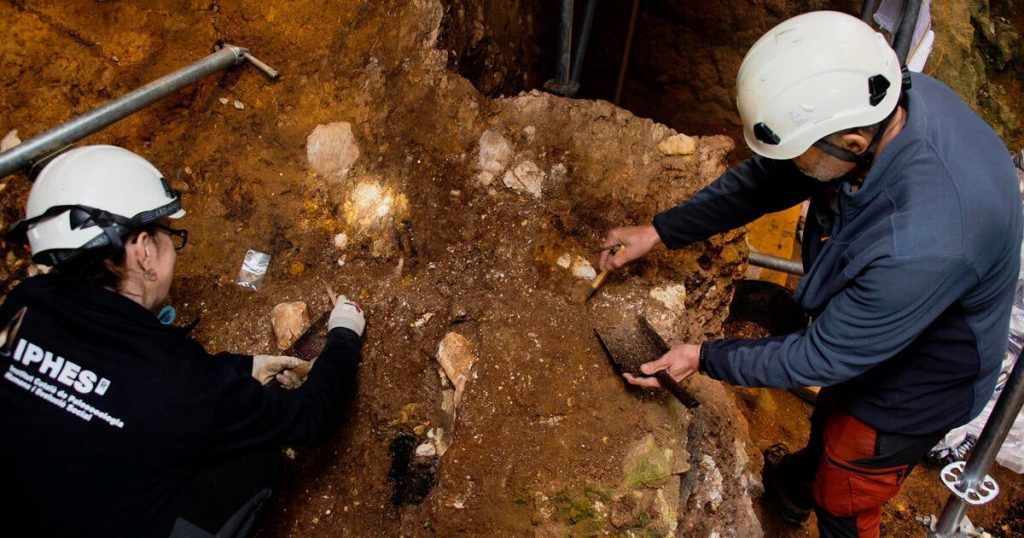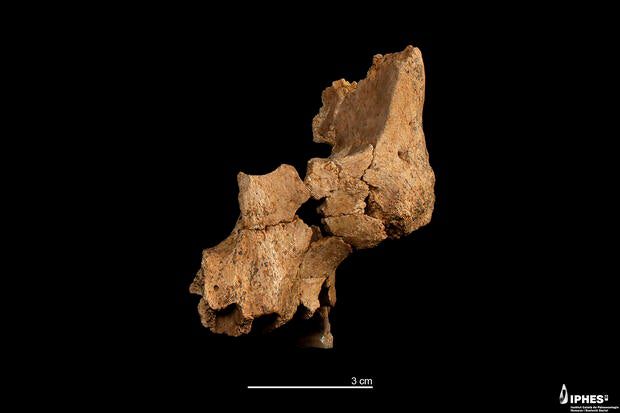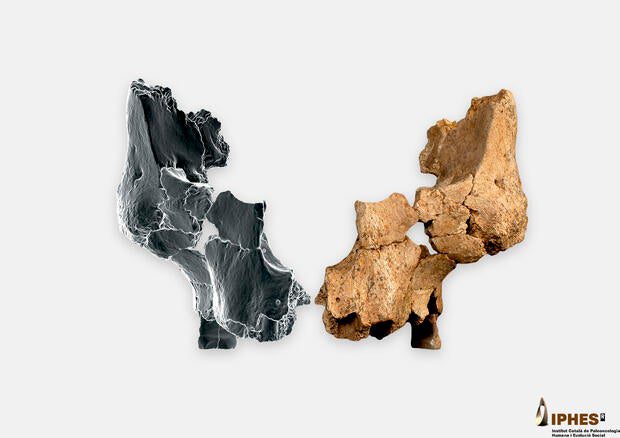Researchers in Spain discovered fossils of a possible new member of prehistoric times in the human family tree, and they say it is the oldest known residue of a face discovered in Western Europe.
The face bones have been found from an adult at Atapuerca the archaeological site in northern Spain in 2022. Since then, a team of scientists has been working to learn more about hominin, which they called Pink. The researchers shared their results in a study in the magazine natureWhich was published on Tuesday.
The researchers said that the remains of Pink dated 1.1 and 1.4 million years.
The study author, Rosa Huguwit, from the first University of Rovira in Spain, said at a press conference, according to Agence France -Presse news agency, that the research “provides a new representative in the history of human development in Europe.”
The researchers said that this discovery indicates that the first humans settled in Europe, where they travel from the eastern side from the continent to the west, about 1.4 million years ago. To date, it was the oldest human species in Western Europe Homo ancestor. I found experts Homo ancestor He is still about 850,000 years old.
Maria d. Gilin / IPhes-CERCA
The oldest human ancestor found in any region in Europe is the people of DMANISI, or Homo GeorgkosA group that has lived in the nation of Georgia now. The remains of this type were dated to 1.8 million years. They are the first members of the human family known to have traveled from Africa to Europe.
“Pink” face
The fossil upper jaw bone and partial cheekbones of a layer of silt and clay are 52 feet Homo predecessor It was discovered in 1994. The bones were not sufficient for researchers to determine the age of Benck or his gender.
Maria d. Gilin / IPhes-CERCA
Of those fossilized bones, researchers were able to use 3D imaging techniques to create a Pink face model. The face “expected forward and more powerful” than a modern human face or a Homo ancestor Maria Marton Torres, director of the National Center for National Research for Human Development in Spain, told AFP.
Elena Santos / Cenieh
The face of you holds some similarities with the human grandfather Men alert The researchers said. The species spanned approximately 2 million years It was the first human type to develop
The dimensions of the most knowledgeable human body and the use of fire and tools. The remains of species are found in Africa, Asia and Europe.
But the similarities were not strong enough for scientists to confirm that the pink was a member of this type. Instead, they suggested that the pink belong to possible new types, which they called A “relevant” man alert.
“This is the most valuable proposal that we can make with the evidence we have,” said Marton Torres, according to Agence France -Presse.
Scientists have also been able to analyze small stone tools and animal bones at the excavation site to learn more about how to live pink. The researchers said that the environment at that time was a wet forest scene, and the residents of the first people lived alongside horses, old livestock, monkeys and river mares. Hojoit said at the press conference that the region was probably a lot of water, making it a “ideal” place for species to settle.
The researchers suggested that the species may be a bridge between Homo Georgkos Types and Homo ancestor Class. The study author Jose Maria Permodes de Castro told AFP that it is likely that the species had “disappeared” during the severe global cooling era that occurred about 900,000 years ago.
Scientists said that research on the excavation site will continue.
He contributed to this report.










More Stories
An exercise that exhausts myelin brain, but it is completely recovered
The neutrons shrink, and this is a good thing for physics
By diving at the bottom of the lake, this robot discovered a mystery that baffles scientists